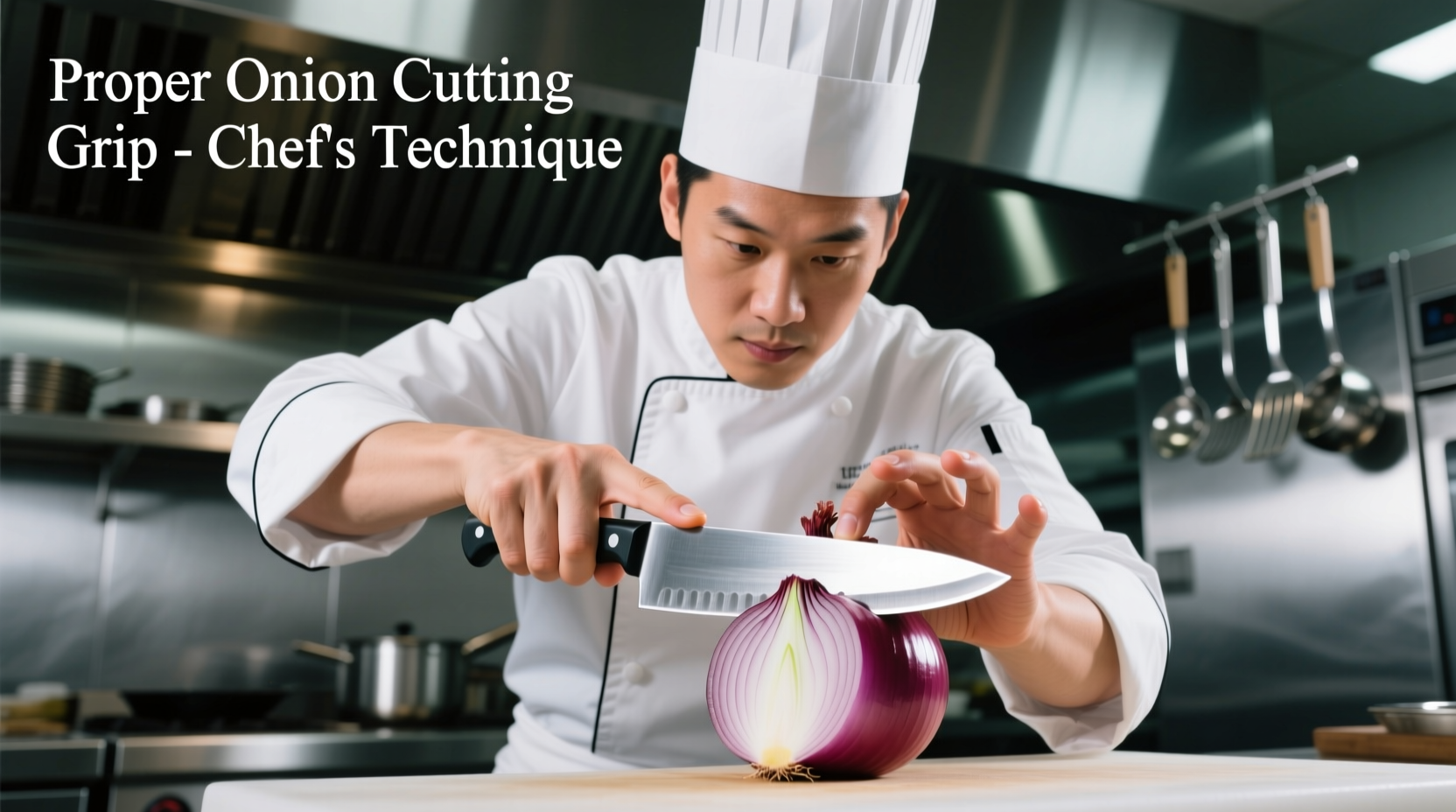The fastest way to cut an onion without crying involves chilling it first, using a sharp knife, and cutting near running water. Proper technique includes removing both ends, peeling, making strategic vertical cuts without slicing through the root, then horizontal cuts before dicing - all while maintaining correct hand positioning for safety and efficiency.
Mastering the art of cutting onions transforms a tear-inducing chore into a quick, efficient kitchen task. Whether you're preparing a simple salad or crafting a complex sauce, proper onion cutting technique affects both your comfort and the final dish's texture. This guide reveals professional methods that minimize tears, maximize safety, and deliver consistent results every time.
Why You've Been Cutting Onions Wrong
Most home cooks make critical mistakes that trigger excessive tearing and create uneven pieces. The sulfur compounds released when cutting onions vaporize and react with moisture in your eyes, causing that familiar sting. According to food science research from the USDA Agricultural Research Service, chilling onions for 30 minutes before cutting reduces enzyme activity by up to 60%, significantly decreasing tear production.

Your Onion Cutting Workflow
Follow this professional kitchen-tested sequence for optimal results:
Preparation Phase: Setting Up for Success
Gather these essential tools before starting:
- A sharp 7-8 inch chef's knife (dull knives crush cells, releasing more irritants)
- A stable cutting board (wood or soft plastic)
- A bowl of ice water nearby
- Optional: Ventilated area or fan directed away from your face
Chill your onion in the refrigerator for 20-30 minutes. This simple step, recommended by the FDA Food Code guidelines, slows the chemical reaction that creates tear-inducing compounds. Keep the onion cold until you're ready to cut.
Safety First: Knife Handling Fundamentals
Proper grip prevents accidents and improves control. Place your index finger and thumb on either side of the blade's base, with remaining fingers wrapped around the handle. Your other hand should use the "claw grip" - curling fingertips inward while knuckles guide the knife edge. This technique, taught at culinary institutions worldwide, keeps fingers safely away from the blade while providing precise control.
The Professional Cutting Technique
Follow these steps for clean, even cuts with minimal tears:
- Remove both ends of the onion (root and stem)
- Peel back the outer skin and any dry layers
- Place the onion flat-side down on your cutting board
- Make vertical cuts from top to root (don't cut through root end)
- Turn the onion 90 degrees and make horizontal cuts
- Finally, slice across to create uniform pieces
Maintain the root end until your final cuts - it holds the onion together and reduces vapor release. Work quickly but deliberately, and consider cutting near running water which helps dissipate the sulfur compounds before they reach your eyes.
| Cutting Style | Best For | Knife Angle | Speed Factor |
|---|---|---|---|
| Fine Dice (1/8") | Salsas, garnishes | 90° perpendicular | ★★★☆☆ |
| Medium Dice (1/4") | Stir-fries, soups | 85° slightly angled | ★★★★☆ |
| Julienne (matchstick) | Asian dishes, salads | 90° with parallel cuts | ★★★☆☆ |
| Wedges | Grilling, roasting | 60° toward root | ★★★★★ |
Advanced Techniques for Specific Needs
Minimizing Tears: Science-Backed Methods
While chilling helps, these additional techniques significantly reduce eye irritation:
- Cut under a vent hood or near running water
- Use a very sharp knife (reduces cell damage)
- Wear kitchen-safe goggles (not recommended for home cooks)
- Light a candle nearby to burn sulfur compounds
According to research published in the Journal of Food Science, the combination of chilling and sharp knife technique reduces tear production by 75% compared to room-temperature cutting with a dull blade.
Storing Cut Onions Properly
Proper storage maintains freshness and prevents odor transfer. The FDA Food Code recommends:
- Store in airtight container within 2 hours of cutting
- Refrigerate at 40°F (4°C) or below
- Use within 7-10 days for best quality
- Keep away from strong-smelling foods
Common Mistakes to Avoid
Even experienced cooks make these critical errors:
- Using a dull knife (increases cell damage and tears)
- Removing the root end too early (causes onion to fall apart)
- Cutting too slowly (more time for vapors to develop)
- Using the wrong cutting board (glass or hard plastic increases vibration)
- Storing cut onions improperly (causes rapid spoilage)
Mastering Onion Cutting: Your Path Forward
Like any kitchen skill, perfecting onion cutting takes practice. Start with one technique (dicing works well for most applications), focus on proper hand positioning, and gradually increase speed as your confidence grows. Within a few weeks of consistent practice, you'll cut onions faster and with fewer tears than ever before. Remember that professional chefs develop this skill through repetition - your first attempts might not be perfect, but each onion brings you closer to mastery.











 浙公网安备
33010002000092号
浙公网安备
33010002000092号 浙B2-20120091-4
浙B2-20120091-4